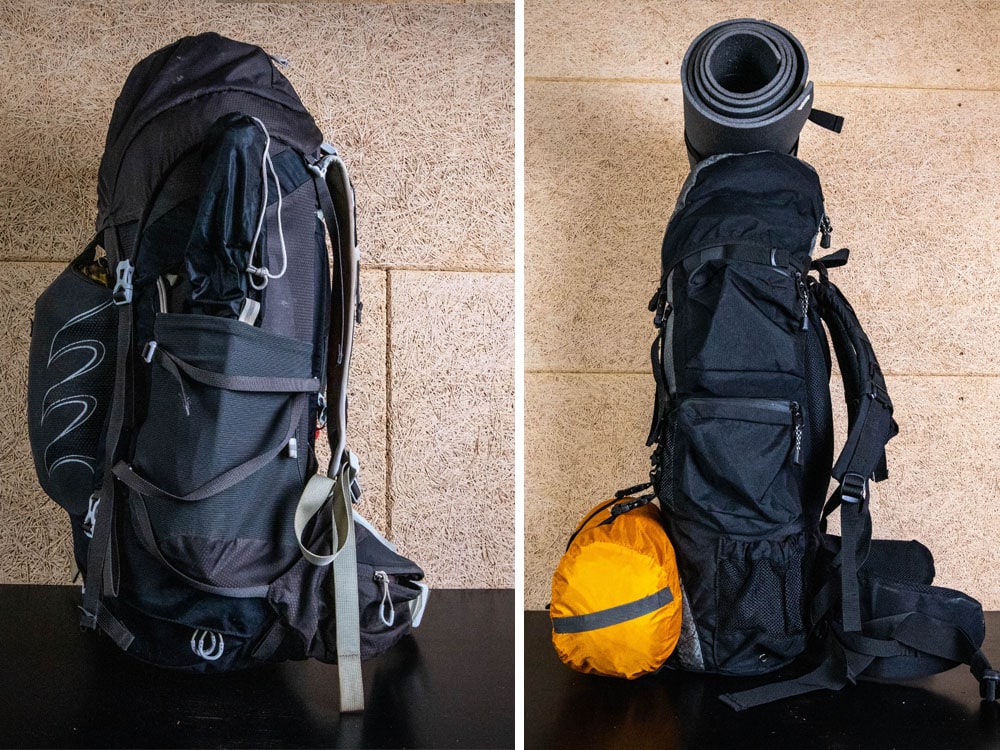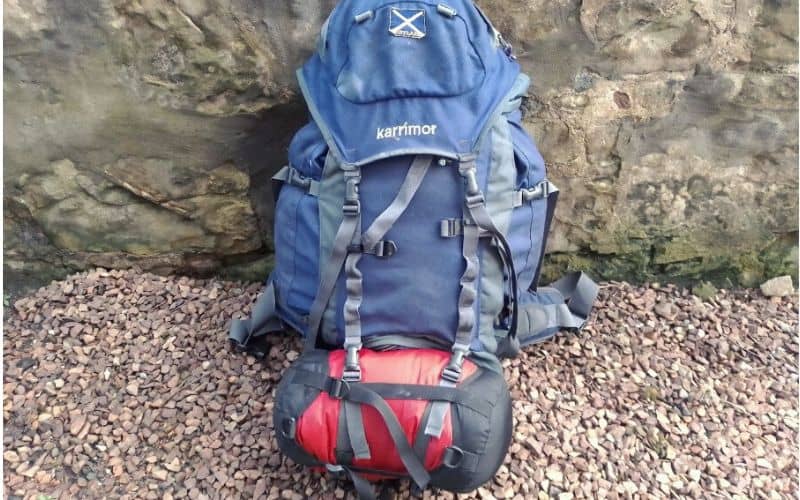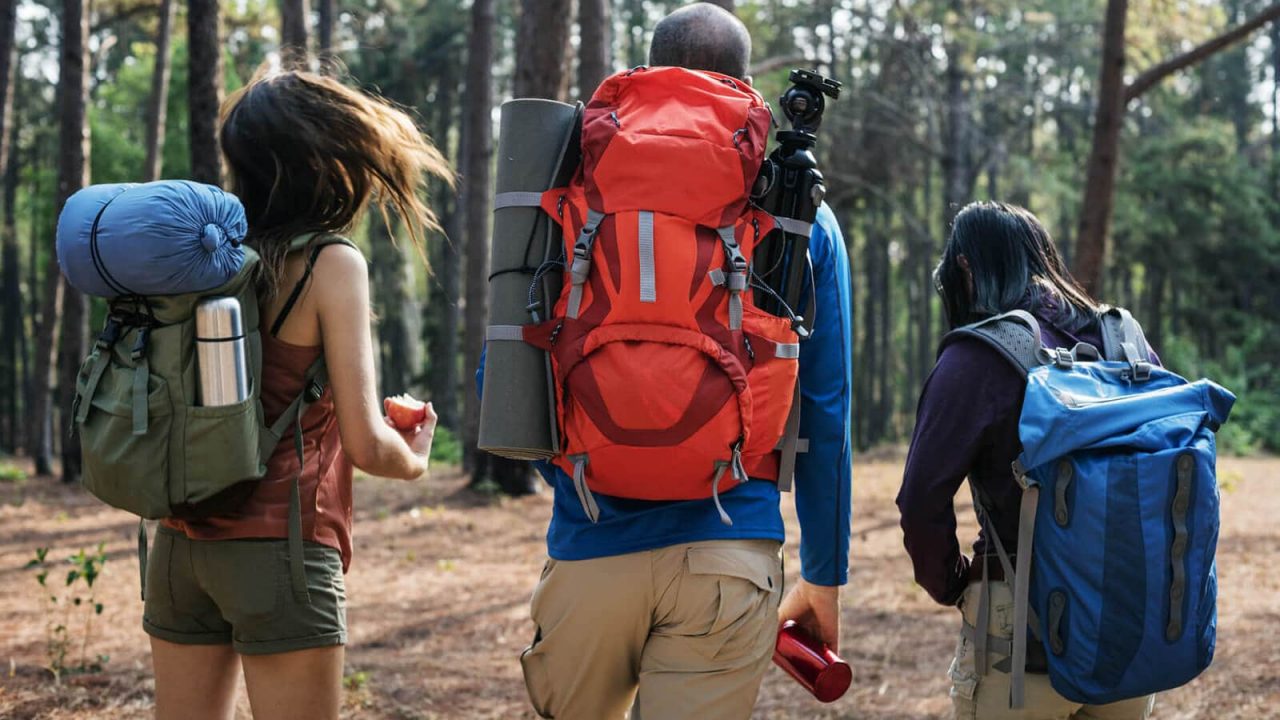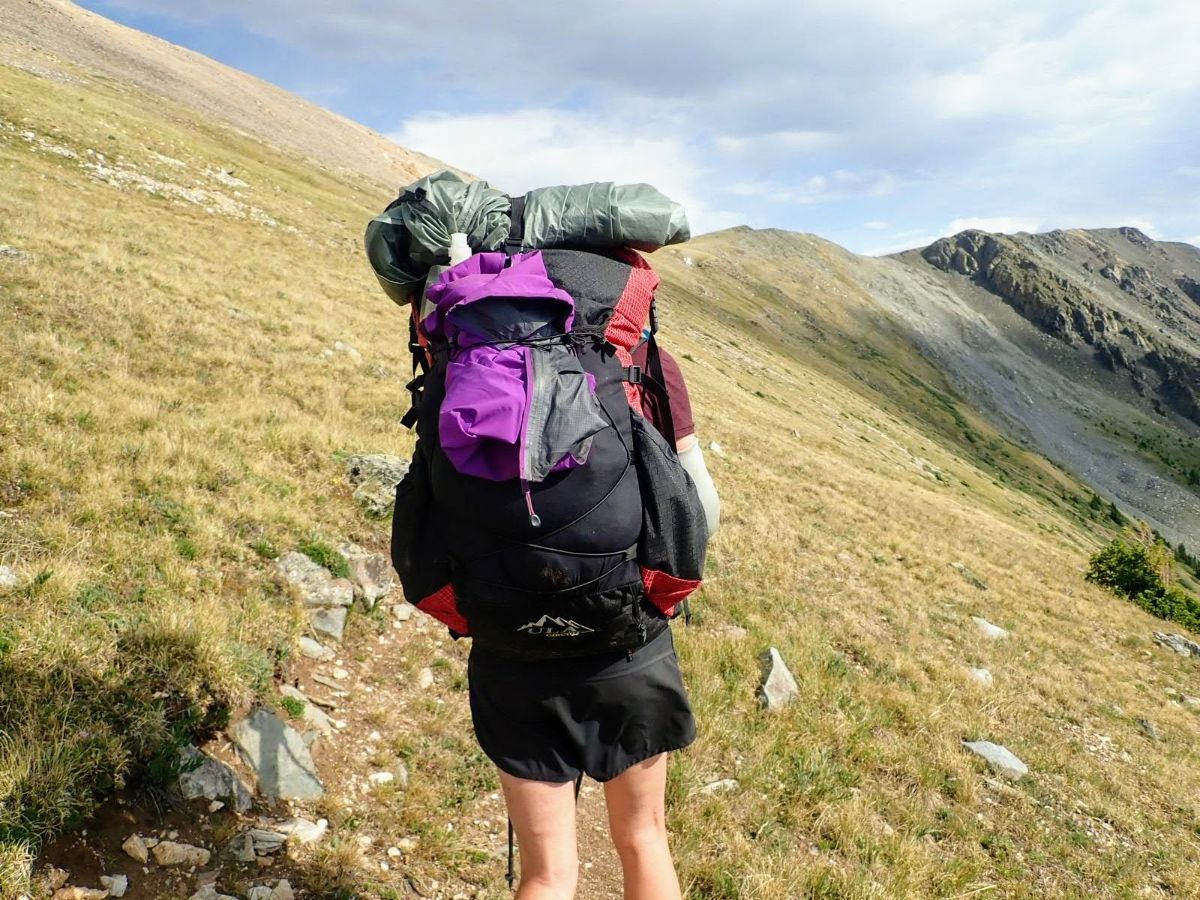Introduction

Attaching a sleeping bag to a backpack is crucial for outdoor enthusiasts and backpackers. It allows for efficient organization and easy access to essential gear while on the trail. This article will explore different methods and tips for attaching a sleeping bag to a backpack.
Whether embarking on a multi-day hike or planning a camping trip, securely attaching your sleeping bag to your backpack offers several benefits. It frees up internal space for other items, providing better packing organization and distribution of weight. The exterior attachment also ensures quick and convenient access to your sleeping bag when needed.
Before delving into the various attachment methods, it’s essential to consider factors like the size and weight of your sleeping bag, the terrain you’ll be traversing, and personal preferences and comfort while hiking. With these considerations in mind, let’s explore the different methods of attaching a sleeping bag to a backpack in detail.
Benefits of attaching a sleeping bag to a backpack

Attaching a sleeping bag to a backpack offers several benefits for outdoor enthusiasts and backpackers. Firstly, it frees up valuable internal space within the backpack, allowing for better organization and distribution of weight. This ensures that other essential gear and equipment can be easily packed without needing an additional storage compartment or bag.
Secondly, attaching a sleeping bag to the backpack’s exterior provides quick and convenient access when needed. This is particularly advantageous during breaks or when setting up camp, as it eliminates the hassle of rummaging through the backpack to find the sleeping bag.
Moreover, attaching the sleeping bag externally helps maintain balance and stability while hiking, as the weight is evenly distributed. Overall, securing a sleeping bag to a backpack enhances efficiency and comfort during outdoor adventures.
Factors to consider before attaching a sleeping bag

Several factors should be considered before attaching a sleeping bag to a backpack. Firstly, assessing the size and weight of the sleeping bag in relation to the backpack’s capacity and load-carrying capabilities is essential. Ensure that the sleeping bag is compatible with the backpack and does not exceed its weight limits.
Secondly, consider the weather conditions and terrain of your outdoor adventure. If you anticipate encountering rain or wet conditions, using a waterproof stuff sack to protect the sleeping bag from moisture may be advisable.
Additionally, consider the accessibility of other items in your backpack when the sleeping bag is attached. Make sure that you can still reach essential gear without having to remove or unstrap the sleeping bag.
Lastly, consider the comfort and stability of a backpack with an attached sleeping bag. Test how well the attachment system holds the sleeping bag in place and if it affects your balance while walking or hiking.
By carefully considering these factors, you can ensure a successful attachment of your sleeping bag to your backpack and enjoy a comfortable outdoor experience.
Method 1: Compression Straps

Compression straps are a popular and effective method for attaching a sleeping bag to a backpack. These straps provide a secure and compact way to carry your sleeping bag, maximizing space and reducing the chance of getting snagged on branches or rocks while hiking.
To attach your sleeping bag using compression straps, roll up your sleeping bag tightly and compress it using the straps provided on your backpack. Place the rolled-up bag vertically against the back of the backpack and secure the compression straps by pulling them tight.
Compression straps offer several benefits, such as keeping the weight centered and balanced, minimizing movement during travel, and providing easy access to other items in your backpack. However, ensuring that the compression straps are not overtightened is crucial to avoiding damaging the sleeping bag. Adjust the straps based on the terrain and weather conditions for optimal comfort and stability.
Step-by-step guide on using compression straps to attach a sleeping bag

To attach a sleeping bag to a backpack using compression straps, follow these steps:
- Roll up your sleeping bag tightly, starting from the foot end.
- Fasten any straps or buckles on the sleeping bag to keep it compact.
- Find the compression straps on your backpack. These are usually located near the bottom or sides.
- Place the rolled-up sleeping bag vertically against the back of the backpack.
- Pull the compression straps over the rolled-up bag and secure them tightly.
- Adjust the straps as needed to ensure a snug fit without over-tightening, which could damage the sleeping bag.
Following this step-by-step guide, you can securely attach your sleeping bag to your backpack using compression straps for a hassle-free hiking experience.
Benefits and limitations of using compression straps

Compression straps to attach a sleeping bag to a backpack offer several benefits. Firstly, it helps streamline the overall pack by keeping the sleeping bag compact and secure. This allows for better weight distribution and balance while hiking. Secondly, compression straps prevent the sleeping bag from shifting or bouncing around during outdoor activities, ensuring comfort and stability.
However, compression straps also have limitations. Over-tightening the straps can put excessive pressure on the sleeping bag, potentially damaging its insulation or fabric. It is important to strike the right balance between securing the bag and not putting too much strain on it. Additionally, compression straps may limit access to other items in the backpack as they cover a portion of its surface. Therefore, packing essential items that may need frequent access outside of the compressed area is crucial.
Method 2: Exterior Attachment Systems

Method 2: Exterior Attachment Systems:
Another method for attaching a sleeping bag to a backpack is by using exterior attachment systems. These systems typically involve straps or cords designed specifically for securing sleeping bags to the outside of a backpack. One common type of exterior attachment system is the daisy chain, which consists of multiple loops along the sides of the backpack where you can secure the sleeping bag using carabiners or clips. Another option is to use bungees or shock cords to attach the sleeping bag to the outside of the backpack, offering flexibility and easy access.
While exterior attachment systems provide convenience and accessibility, it is essential to consider the weather conditions and terrain. Ensure your sleeping bag is protected from rain, snow, or rough surfaces during outdoor adventures. It’s also essential to ensure that loose straps or cords are appropriately secured to avoid snagging on branches or causing discomfort while carrying the backpack.
Overall, exterior attachment systems can be a practical solution for attaching a sleeping bag to a backpack while providing quick access and efficient use of space on your outdoor journeys.
Overview of different exterior attachment systems for sleeping bags

Different exterior attachment systems offer various options for securely attaching a sleeping bag to a backpack. One standard system is the daisy chain, which features multiple loops along the sides of the backpack. Carabiners or clips can secure the sleeping bag to these loops. Another option is bungees or shock cords, which provide flexibility and easy access while ensuring a snug fit for the sleeping bag. Additionally, some backpacks may have built-in straps specifically designed for attaching sleeping bags. The choice of attachment system will depend on personal preference and the backpack’s design. It’s important to consider durability, ease of use, and stability when selecting an exterior attachment system for a sleeping bag.
Pros and cons of using exterior attachment systems

Exterior attachment systems offer several benefits when attaching a sleeping bag to a backpack. One of the major advantages is convenience. These systems provide easy access to the sleeping bag, allowing campers to detach and use it whenever needed. Additionally, using exterior attachment systems ensures efficient use of space inside the backpack, as the sleeping bag can be securely fastened on the outside.
However, there are a few limitations to consider. The main drawback is that an externally attached sleeping bag is exposed to the elements, increasing the risk of getting wet or dirty in adverse weather conditions or rough terrain. This may require additional waterproofing measures, such as covering the sleeping bag with a rain cover or using a waterproof stuff sack.
Overall, exterior attachment systems offer convenience and maximize internal packing space but may require extra precautions for protection against moisture. Campers should carefully assess their needs and circumstances before determining whether an exterior attachment system suits them.
Tips for Proper Attachment

Proper attachment of a sleeping bag to a backpack is crucial for a successful camping or hiking experience. Here are some tips to ensure a secure and efficient attachment:
- Pack and compress the sleeping bag: Before attaching it, ensure it is properly packed and compressed to minimize size. This will allow for easier attachment and prevent unnecessary bulk.
- Choose the right attachment method. Consider the type of attachment system available on your backpack and choose the method that best suits your needs. Whether using compression straps or an exterior attachment system, select the option that provides maximum stability and accessibility.
- Ensure secure attachment: Take time to fasten the sleeping bag to the backpack securely. Double-check the straps or buckles to ensure they are tightened properly, preventing any shifting or falling during your hike.
- Balance weight distribution: When attaching the sleeping bag, ensure that it is evenly distributed on both sides of the backpack. This helps maintain balance and stability while carrying the load.
- Stability test: Once attached, gently shake your backpack to test if the sleeping bag stays in place. If it shifts or feels unstable, readjust the attachments until you achieve a secure fit.
Following these tips, you can adequately attach your sleeping bag to your backpack, allowing easy access during outdoor adventures while minimizing discomfort or inconvenience.
Properly packing and compressing the sleeping bag

Properly packing and compressing your sleeping bag is essential for efficient attachment to your backpack. Start by rolling or folding the sleeping bag tightly, removing excess air to reduce size. Use compression straps or stuff sacks designed specifically for sleeping bags to compact them further. Ensure all zippers are entirely closed to prevent snags or damage during transportation. Compressing the sleeping bag saves space in your backpack and helps maintain balance and stability while hiking or camping. Packing the sleeping bag properly protects it from dirt, moisture, and other elements, ensuring its longevity and performance.
Ensuring secure attachment to prevent shifting or falling

Taking specific measures to secure your sleeping bag’s attachment to your backpack is essential HTTPS://www.digiluggage.com/traveling-in-style-mastering-the-art-of-folding-a-suit-jacket-for-luggage/. Firstly, ensure the compression straps or exterior attachment systems are properly tightened and secured. Check for loose ends or buckles that could come undone during your hike. It is also advisable to distribute the weight evenly on your backpack, placing the sleeping bag close to your back and centered for better balance. Additionally, double-check that all other items in your backpack are securely packed and won’t shift around while walking. This will minimize the risk of the sleeping bag sliding or falling off, keeping it safely attached throughout your outdoor adventure.
Alternative Methods

You can explore alternative methods to attach your sleeping bag to your backpack. One option is using carabiners or clips to hook the loops or straps of your sleeping bag onto the outside of your backpack. This provides a quick and easy way to secure the sleeping bag without relying on compression straps or exterior attachment systems.
Another option is using bungee cords or elastic straps to create a custom attachment system for your sleeping bag. Simply secure the ends of the bungee cord or elastic strap to the appropriate points on your backpack and adjust the tension to keep the sleeping bag in place.
For those who prefer a DIY approach, you can sew additional loops or attachment points onto your backpack to easily secure your sleeping bag. Just make sure that these modifications are done securely and won’t compromise the integrity of your backpack.
By thinking creatively and finding alternative solutions, you can effectively attach your sleeping bag to your backpack for a safe and comfortable outdoor experience.
Exploring alternative ways to attach a sleeping bag to a backpack

When it comes to attaching a sleeping bag to a backpack, there are alternative methods you can consider. One option is using carabiners or clips to hook the loops or straps of your sleeping bag onto the outside of your backpack. This provides a quick and easy way to secure the sleeping bag without relying on compression straps or exterior attachment systems.
Another alternative is using bungee cords or elastic straps to create a custom attachment system for your sleeping bag. By securing the ends of the bungee cord or elastic strap to appropriate points on your backpack, you can adjust the tension as needed to keep the sleeping bag in place.
For those who prefer a DIY approach, sewing additional loops or attachment points onto your backpack allows for an easy and secure sleeping bag attachment.
By thinking creatively and exploring alternative solutions, you can effectively attach your sleeping bag to your backpack for a safe and comfortable outdoor experience.
Creative and efficient solutions for attaching a sleeping bag
Conclusion
Key takeaways and final recommendations for attaching a sleeping bag to a backpack
Key Takeaways for Attaching a Sleeping Bag to a Backpack:
1. Consider the backpack’s design: Before attaching a sleeping bag to your backpack, ensure it has suitable attachment points or straps. Look for loops, buckles, or compression straps to hold your sleeping bag securely.
2. Compression sacks: Invest in a compression sack for your sleeping bag. These sacks compress your sleeping bag to save space and come with straps or cords that can be easily attached to your backpack. Compression sacks are lightweight and compact your sleeping bag, ensuring it doesn’t shift or become loose during your hike.
3. Bottom or top placement: Decide whether you want to attach your sleeping bag at the top or bottom of your backpack. Placing it at the bottom can provide a stable base and help distribute weight evenly, while attaching it at the top allows quick access. Consider your personal preference and the overall balance of your backpack before making a decision.
4. Waterproof protection: Protect your sleeping bag from moisture and rain. Use a waterproof cover or dry bag to shield your sleeping bag from external elements. This will keep your sleeping bag dry and ensure its insulation properties remain intact, especially during unpredictable weather conditions.
Final Recommendations for Attaching a Sleeping Bag to a Backpack:
1. Test the attachment points: Before hiking, try attaching your sleeping bag to your backpack. Ensure that the straps, loops, or buckles hold the sleeping bag securely in place and that it doesn’t move or swing excessively.
2. Pack smartly: When attaching your sleeping bag, ensure it doesn’t obstruct access to other essential items in your backpack. Organize your gear to easily retrieve items without removing the sleeping bag.
3. Adjust for comfort: Pay attention to the weight distribution and adjust the straps accordingly. Distribute the weight evenly to avoid straining your back and shoulders. Experiment with different adjustments until